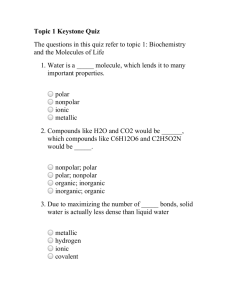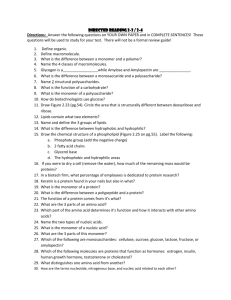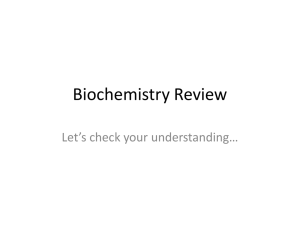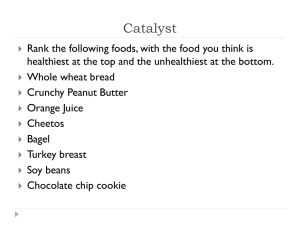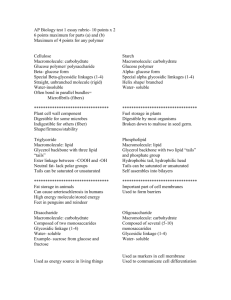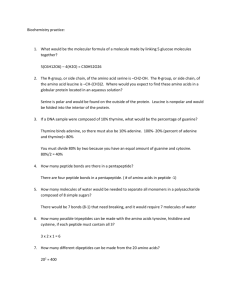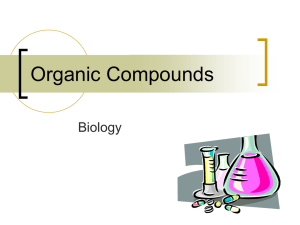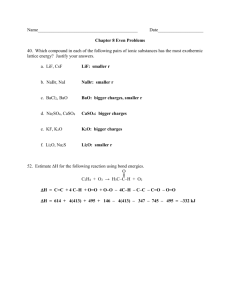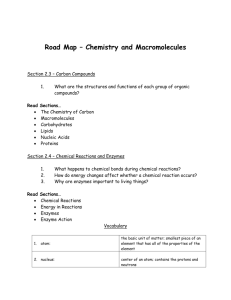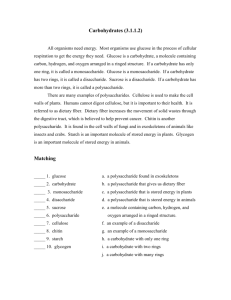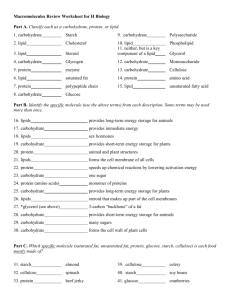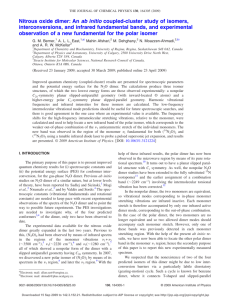Biochemistry quiz and key
advertisement
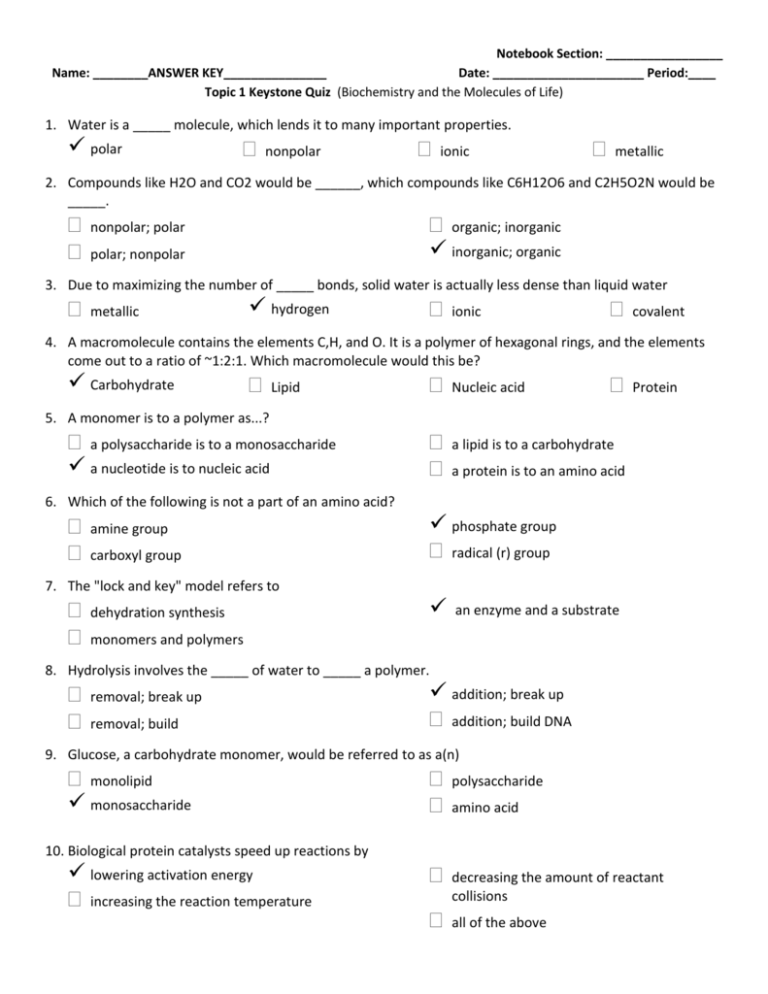
Notebook Section: _________________ Name: ________ANSWER KEY_______________ Date: ______________________ Period:____ Topic 1 Keystone Quiz (Biochemistry and the Molecules of Life) 1. Water is a _____ molecule, which lends it to many important properties. polar nonpolar ionic metallic 2. Compounds like H2O and CO2 would be ______, which compounds like C6H12O6 and C2H5O2N would be _____. organic; inorganic inorganic; organic nonpolar; polar polar; nonpolar 3. Due to maximizing the number of _____ bonds, solid water is actually less dense than liquid water metallic hydrogen ionic covalent 4. A macromolecule contains the elements C,H, and O. It is a polymer of hexagonal rings, and the elements come out to a ratio of ~1:2:1. Which macromolecule would this be? Carbohydrate Lipid Nucleic acid Protein 5. A monomer is to a polymer as...? a polysaccharide is to a monosaccharide a nucleotide is to nucleic acid a lipid is to a carbohydrate a protein is to an amino acid 6. Which of the following is not a part of an amino acid? amine group carboxyl group phosphate group radical (r) group 7. The "lock and key" model refers to dehydration synthesis an enzyme and a substrate monomers and polymers 8. Hydrolysis involves the _____ of water to _____ a polymer. removal; break up removal; build addition; break up addition; build DNA 9. Glucose, a carbohydrate monomer, would be referred to as a(n) monolipid monosaccharide polysaccharide amino acid 10. Biological protein catalysts speed up reactions by lowering activation energy increasing the reaction temperature decreasing the amount of reactant collisions all of the above Notebook Section: _________________ Name: _____________________________________ Date: ______________________ Period:____ Topic 1 Keystone Quiz (Biochemistry and the Molecules of Life) 1. Water is a _____ molecule, which lends it to many important properties. polar nonpolar ionic metallic 2. Compounds like H2O and CO2 would be ______, which compounds like C6H12O6 and C2H5O2N would be _____. nonpolar; polar polar; nonpolar organic; inorganic inorganic; organic 3. Due to maximizing the number of _____ bonds, solid water is actually less dense than liquid water metallic hydrogen ionic covalent 4. A macromolecule contains the elements C,H, and O. It is a polymer of hexagonal rings, and the elements come out to a ratio of ~1:2:1. Which macromolecule would this be? Carbohydrate Lipid Nucleic acid Protein 5. A monomer is to a polymer as...? a polysaccharide is to a monosaccharide a nucleotide is to nucleic acid a lipid is to a carbohydrate a protein is to an amino acid 6. Which of the following is not a part of an amino acid? amine group carboxyl group phosphate group radical (r) group 7. The "lock and key" model refers to dehydration synthesis an enzyme and a substrate monomers and polymers 8. Hydrolysis involves the _____ of water to _____ a polymer. removal; break up removal; build addition; break up addition; build DNA 9. Glucose, a carbohydrate monomer, would be referred to as a(n) monolipid monosaccharide polysaccharide amino acid 10. Biological protein catalysts speed up reactions by lowering activation energy increasing the reaction temperature decreasing the amount of reactant collisions all of the above
